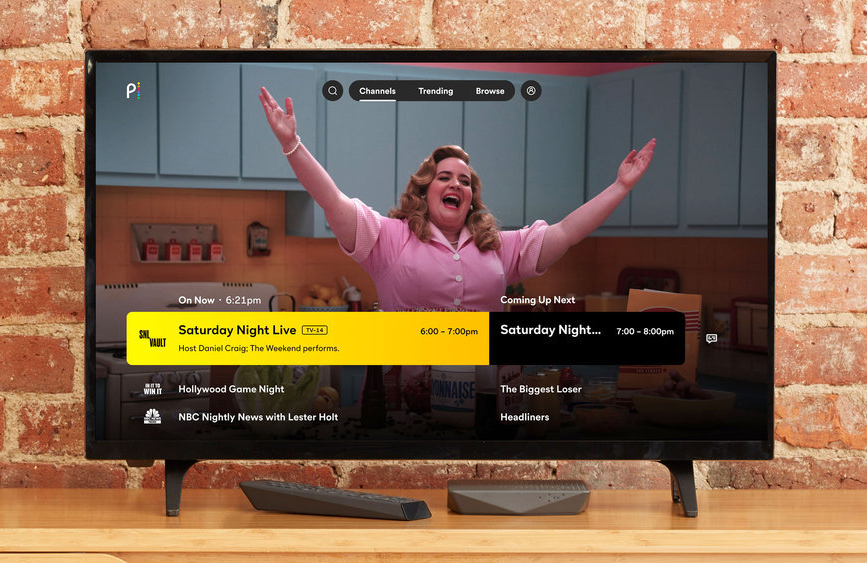No, Linear TV Isn’t Dead, and Streaming Isn’t Here to Kill It
-
The Peacock app features live TV alongside its original streaming shows and on-demand library (Photo: Peacock)
Over the past year, there have been many moments of mourning the death of good old-fashioned TV. In 2022, some industry higher-ups seemed determined to bury it for good: Disney’s Bob Iger said that “linear TV and satellite is marching towards a great precipice” and Netflix’s former CEO declared that linear TV only had about five to 10 years left before streamers took over. Still others took the opposite stance, like Fox Corporation CFO Steve Tomsic who cited marquee events like the Super Bowl as reasons that linear TV will long continue.
In some ways, both are right — linear TV isn’t dead, it’s just evolving. Streamers are becoming more and more common, but facing their own set of challenges while staying afloat. Back in July 2022, a Nielsen report showed streaming narrowly taking the largest piece of the viewing pie for the first time ever, with 34.8% of viewers over the 34.4% of viewers watching cable and 21.6% watching broadcast — that’s 65% of viewers still attached to linear TV. This week CBS News reported that for the first time, linear TV accounted for just under 50% of daily viewing with daily digital video watching accounting for 52.3%. That number, however, also includes social media content, like TikTok and YouTube videos. If anyone is looking to attack the true enemy of television, those apps would be the first place to bring your pitchforks.
What all these stats together are telling us is that the industry is teetering between an even split of watching linear TV and streaming services, and each model is adopting strategies from the other to keep our attention. The way we watch TV ultimately won’t change that much, it’s where we watch what that will.
According to a recent report from The Hollywood Reporter, the direct result of slashing budgets for network and cable television is less original content on those platforms. That’s why channels like TBS and USA have become more well-known for their reruns of Friends and Law & Order: Special Victims Unit than their hot new shows. Some networks have teamed up with streaming services to get the best of both worlds. FX and Fox both have deals with Hulu that makes their linearly aired shows available on the service the next day — and FX has gone one step further, creating its own content just for Hulu while still keeping the FX branding strong to support the cable network. NBC launched Peacock, its own streaming service for its network shows and real-time access to its channels plus streaming-only originals, perhaps one of the best examples of how linear TV can straddle the line when getting into the streaming game.
The bread and butter of linear TV continues to be live news and, even more so, live sports. What Tomsic said about the Super Bowl proved to be true — it was a huge win for Fox. And other networks have been able to hang their hats on big sports tentpoles to pay the bills as well. NBCUniversal reported that the World Cup offset the losses caused by “cord-cutting” (getting rid of traditional cable or satellite), Disney’s deal with the NFL saved it from seeing much bigger losses, and Turner Sports (which airs games on TBS, TNT, AT&T SportsNet, and TruTV) has long relied on its NBA, MLB, NHL, and March Madness rights to bring in viewers. Even as sports programming moves over to streaming services like ESPN+, FuboTV, and Hulu Plus Live TV, it still sticks to that scheduled TV model to reach viewers in real time.
That’s just one example of the many ways that streaming TV is attempting to replicate the linear model. In the last year, more and more FAST channels have been hitting the market. Many of these ad-supported models feature live TV with commercial breaks along with on-demand libraries that are more akin to a typical streaming service. And even those services, like Netflix, that once went all-in on the binge model now see the appeal of keeping the conversation around its shows going with a weekly episode release strategy. It may not be as specific as a show airing only from 8:00 PM to 9:00 PM, but it is still sticking to a linear schedule. The streaming service has even confirmed that it’s been testing live programming.
The life of one form of TV doesn’t automatically mean the death of another. Linear and streaming TV can and should co-exist, and the entity in power will continue to vacillate for the foreseeable future. There will always be someone with cable looking for a Netflix password or someone with only streaming services asking to come over to watch the big game or award show (though more and more are available to watch live on the award body’s website or YouTube). Network and cable channels may find that some sort of app or streaming platform is the best way to deliver their content, but that’s just the next step in the evolution, not the death, of good old-fashioned television.
Brianna Wellen is a TV Reporter at Primetimer who became obsessed with television when her parents let her stay up late to watch E.R.
TOPICS: Linear TV, FOX, NBC, Peacock, TBS, TNT, Cable News, Disney, FAST channel, Nielsen, Streaming TV
